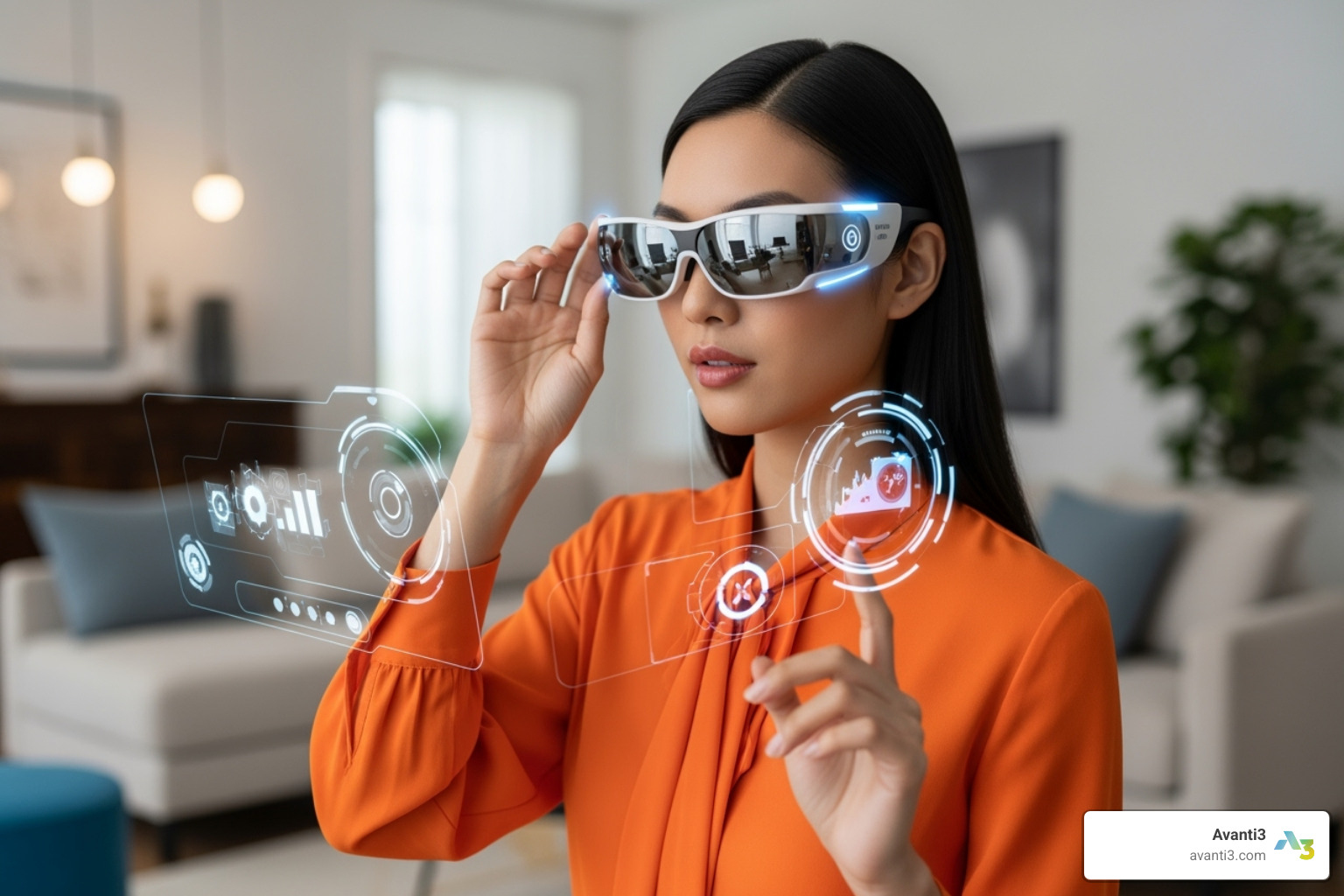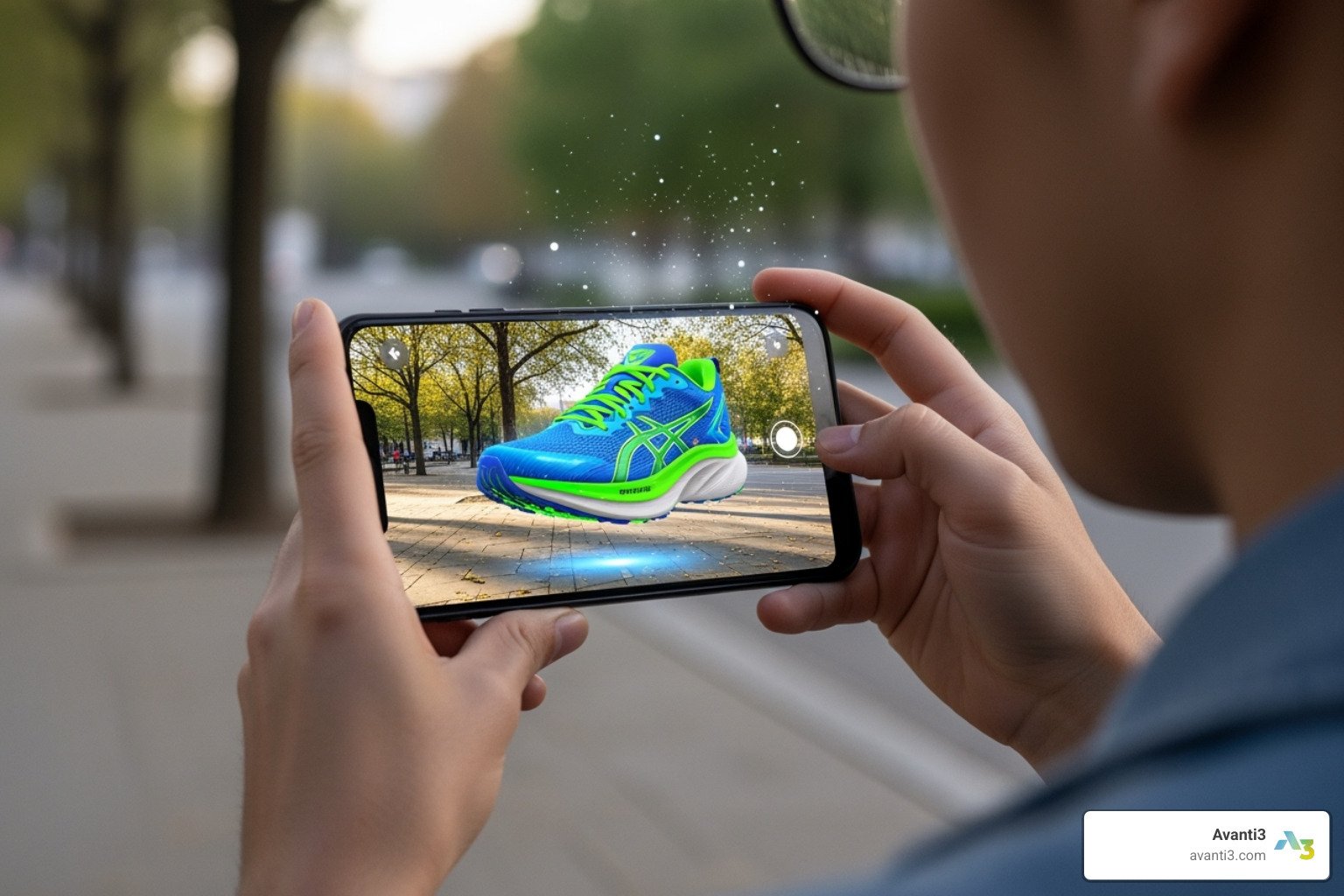Immersion Augmented Reality: Ultimate 2025
Understanding Immersion in Augmented Reality
What is Immersion in Extended Reality (XR)?
When we talk about immersion in Extended Reality (XR), we’re referring to the objective degree to which a user is fully drawn in and absorbed by an experience. It’s the technical capability of a system to create a compelling, all-encompassing environment that engrosses our senses and perception. This is a crucial element for successful VR and AR products, as it directly impacts user engagement and the feeling of “being there.”
Immersion creates a sense of presence—the subjective sensation of being physically present in a non-physical world. This is achieved by surrounding the user with engrossing stimuli, whether visual, auditory, or even haptic. It involves a psychological immersion where our minds become deeply invested, leading to a suspension of disbelief, where we accept the digital world as our temporary reality. Sometimes, this can even feel like telepresence, where we feel as if we are truly in a remote location or interacting with distant objects.
The Spectrum of Reality: From AR to VR
The way immersion is achieved differs significantly across the XR spectrum, which includes Virtual Reality (VR), Augmented Reality (AR), and Mixed Reality (MR).
-
Virtual Reality (VR): VR aims for complete immersion. It transports us to entirely digital environments, replacing our real-world surroundings. Think of it as stepping into a completely new world. VR systems fully immerse us in a simulated digital environment, often through a headset that covers our eyes and uses motion sensors to track our movements. The goal here is to make us feel like we are genuinely in that virtual world, whether it’s a fantastical game or a realistic training simulation. Examples like ‘Half-Life: Alyx’ demonstrate the profound immersion VR can achieve.
-
Augmented Reality (AR): Unlike VR, AR improves our real world by overlaying digital content onto it. We still see and interact with our physical environment, but it’s now augmented with digital information. This can be experienced through smartphones, tablets, or specialized AR headsets. AR overlays digital content onto the physical world, using cameras and sensors to superimpose digital information. A great example of AR immersion is Pokémon GO, which brought digital creatures into our parks and streets, making millions feel like they were part of a real-world digital trip. AR alters our ongoing perception of a real-world environment by adding virtual elements, rather than replacing it entirely.
-
Mixed Reality (MR): MR takes things a step further by blending elements of both VR and AR. It allows digital content to not only overlay the real world but also to interact with it and be perceived as part of it. With MR, virtual objects can respond to physical objects and vice-versa, creating a truly blended experience. This allows for two-way interaction, blurring the lines between physical and digital fields. Imagine manipulating 3D models in your living room as if they were physically there.
Here’s a comparison of how these technologies approach immersion:
| Feature | Virtual Reality (VR) | Augmented Reality (AR) | Mixed Reality (MR) |
|---|---|---|---|
| Environment | Fully digital, replaces real world | Real world improved with digital overlays | Blends real and virtual, allowing interaction |
| Interaction | Primarily with digital objects | Digital content appears in real world, limited interaction with physical | Digital and physical objects interact seamlessly |
| Hardware | VR headsets (e.g., Meta Quest, HTC Vive) | Smartphones, tablets, AR glasses (e.g., smart glasses) | Advanced AR/MR headsets (e.g., Microsoft HoloLens, Magic Leap) |
| Immersion Level | High (full sensory occlusion) | Moderate (digital content in real world) | High (seamless blend, real-time interaction) |
| User Awareness | Low (fully immersed in virtual world) | High (fully aware of real surroundings) | High (aware of real world, digital elements feel real) |
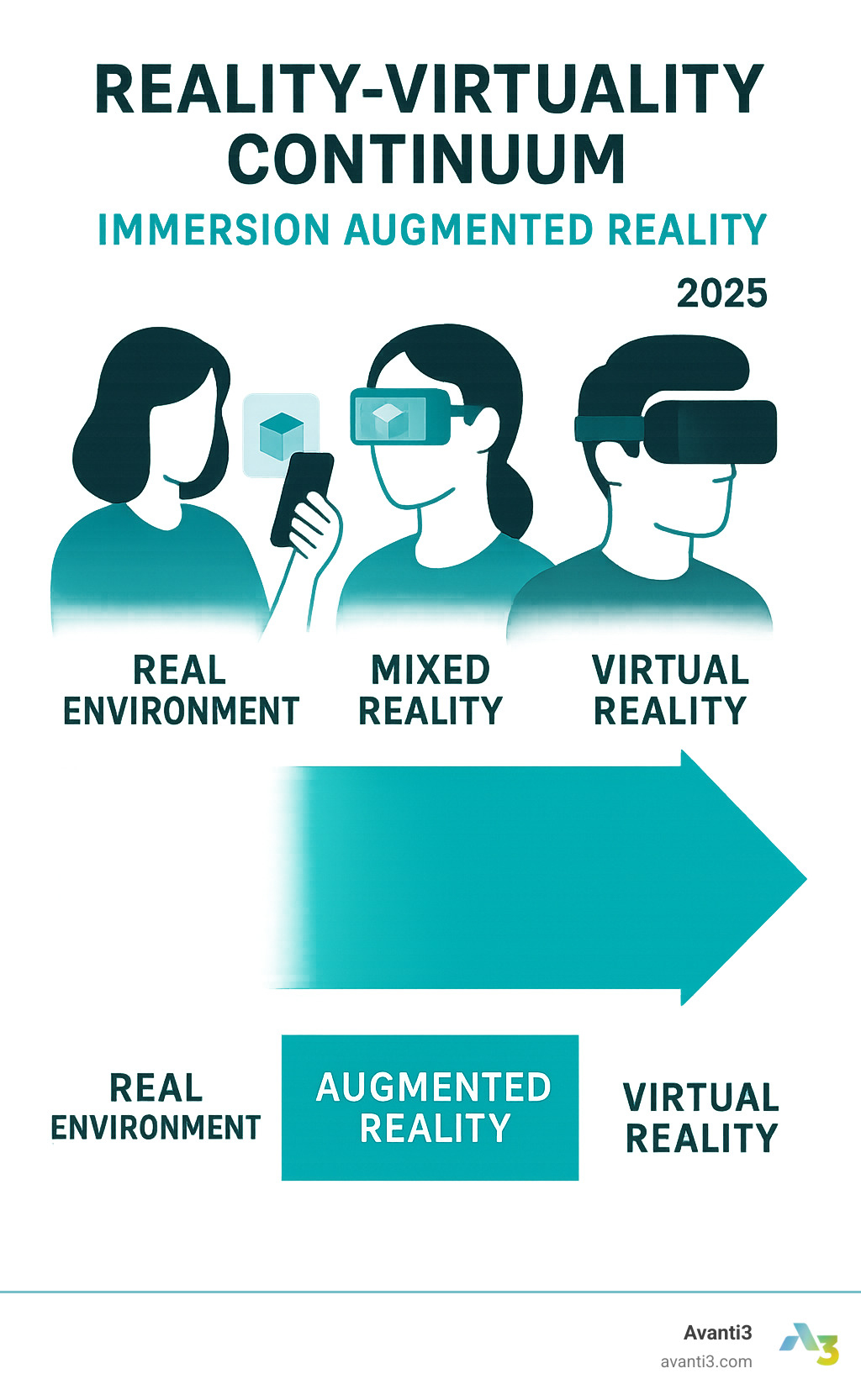
This spectrum, often called the Reality-Virtuality Continuum, illustrates how we move from a completely real environment to a fully virtual one, with AR and MR falling somewhere in between. Each technology offers distinct levels of interactivity and environmental awareness, catering to different user experiences and applications.
How is Immersion Measured?
Measuring immersion isn’t as simple as counting pixels. It’s a complex interplay of objective system capabilities and subjective user perception. Researchers and designers use various methods to gauge how deeply immersed a user feels:
- Presence Questionnaires: These are subjective self-report tools where users answer questions about their feeling of “being there,” their sense of realism, and their engagement with the virtual environment. Questions might ask how much they felt like they were in the virtual world, how much they forgot about their real surroundings, or how real the virtual objects seemed.
- Biometric Data: Objective physiological responses can indicate immersion. This includes monitoring heart rate, skin galvanic response (sweat gland activity), and even brainwave patterns (EEG). Changes in these metrics can suggest heightened emotional engagement and cognitive absorption.
- Task Performance: How well a user performs a task within an XR environment can also be an indicator. If they are deeply immersed, they might perform tasks more naturally and efficiently, as if they were in a real-world scenario.
- User Feedback and Observation: Direct qualitative feedback from users through interviews or open-ended comments provides rich insights. Observing user behavior, such as natural reactions to virtual stimuli or attempts to interact with digital objects as if they were physical, also offers valuable clues.
These methods, combined, give us a comprehensive understanding of how effective an XR experience is at achieving true immersion augmented reality.
The Building Blocks of Immersion Augmented Reality
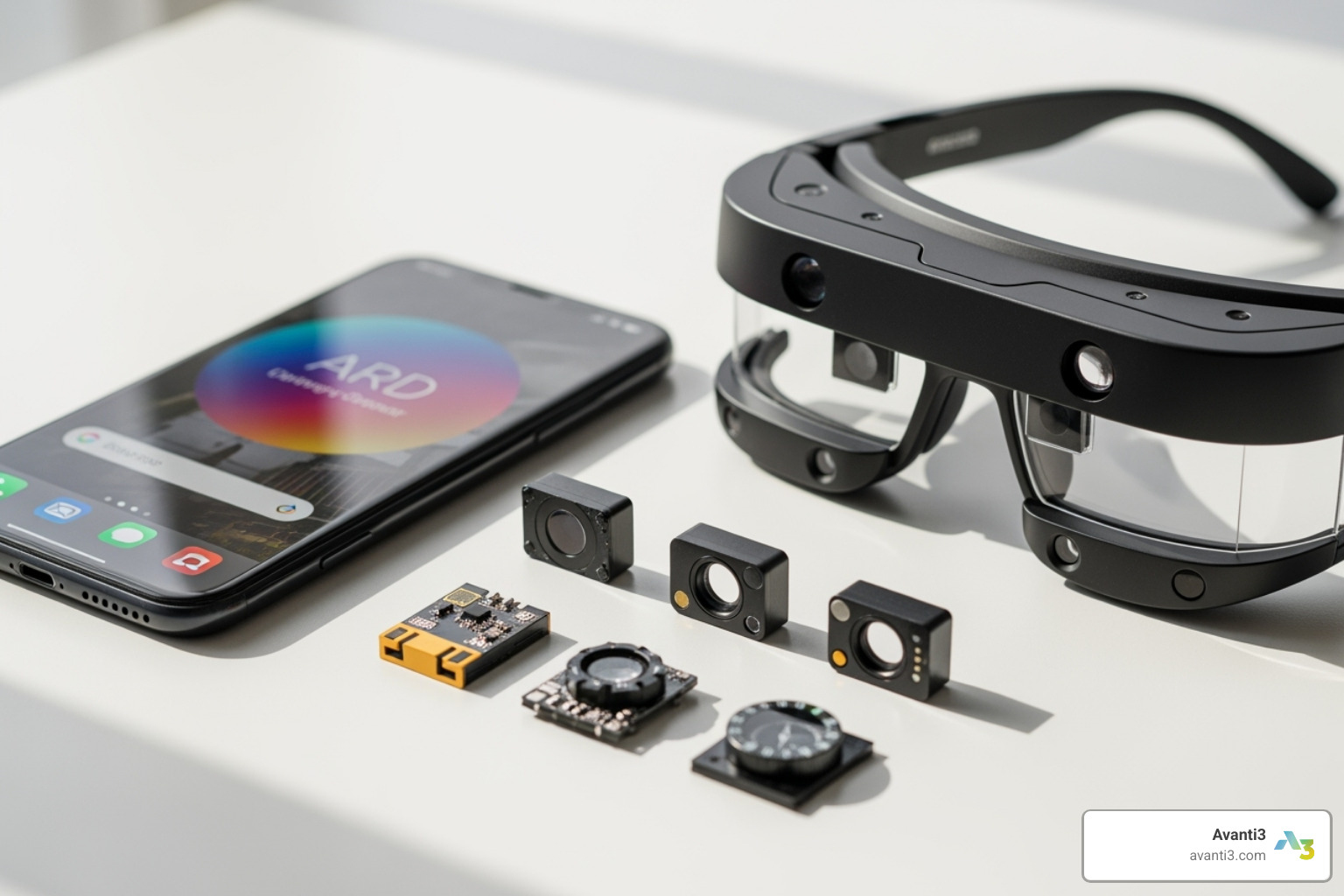
Creating truly immersion augmented reality experiences is equal parts technology and design. At Avanti3 we combine powerful hardware, clever software, and human-centred UX to make digital layers feel like a natural extension of the physical world.
Essential Hardware and Software for Augmented Reality
- Processors (CPU / GPU). The “brain” of any AR device. Fast chips keep graphics smooth and latency low \u00199 critical for convincing immersion.
- Displays. Handheld phones and tablets remain the most common gateway, while head-mounted displays such as Microsoft HoloLens or Magic Leap free up your hands and boost presence. Wider fields of view and high refresh rates avoid the distracting “tunnel” effect.
- Sensors. Cameras capture the real world, IMUs track motion, and depth sensors (e.g., LiDAR) map your space so digital objects stay locked in place. Location sensors enable large-scale, Pokémon-GO-style experiences.
- SDKs & 3D Engines. Toolkits like ARKit / ARCore plus engines such as Unity or Unreal handle tracking, lighting, physics, and interaction so creators can focus on content.
- WebAR Platforms. Browser-based AR removes the download barrier, putting immersive experiences within reach of almost any modern smartphone.
Key Elements for a Deeply Immersive Augmented Reality Experience
- Realistic rendering. Accurate lighting, shadowing, and occlusion make virtual items sit believably in your room.
- Interactivity. Instant feedback to gestures, gaze, or voice gives users agency and keeps them engaged.
- Narrative hooks. Good storytelling turns a technical demo into a memorable journey.
- Multisensory cues. Spatial audio and, where possible, haptics reinforce the illusion.
- Comfort by design. Lightweight wearables, low latency, and clear UX guidelines prevent fatigue and motion discomfort.
Balancing these pillars lets us deliver AR experiences that feel magical without ever losing sight of real-world practicality.
Immersive AR in Action: Changing Industries
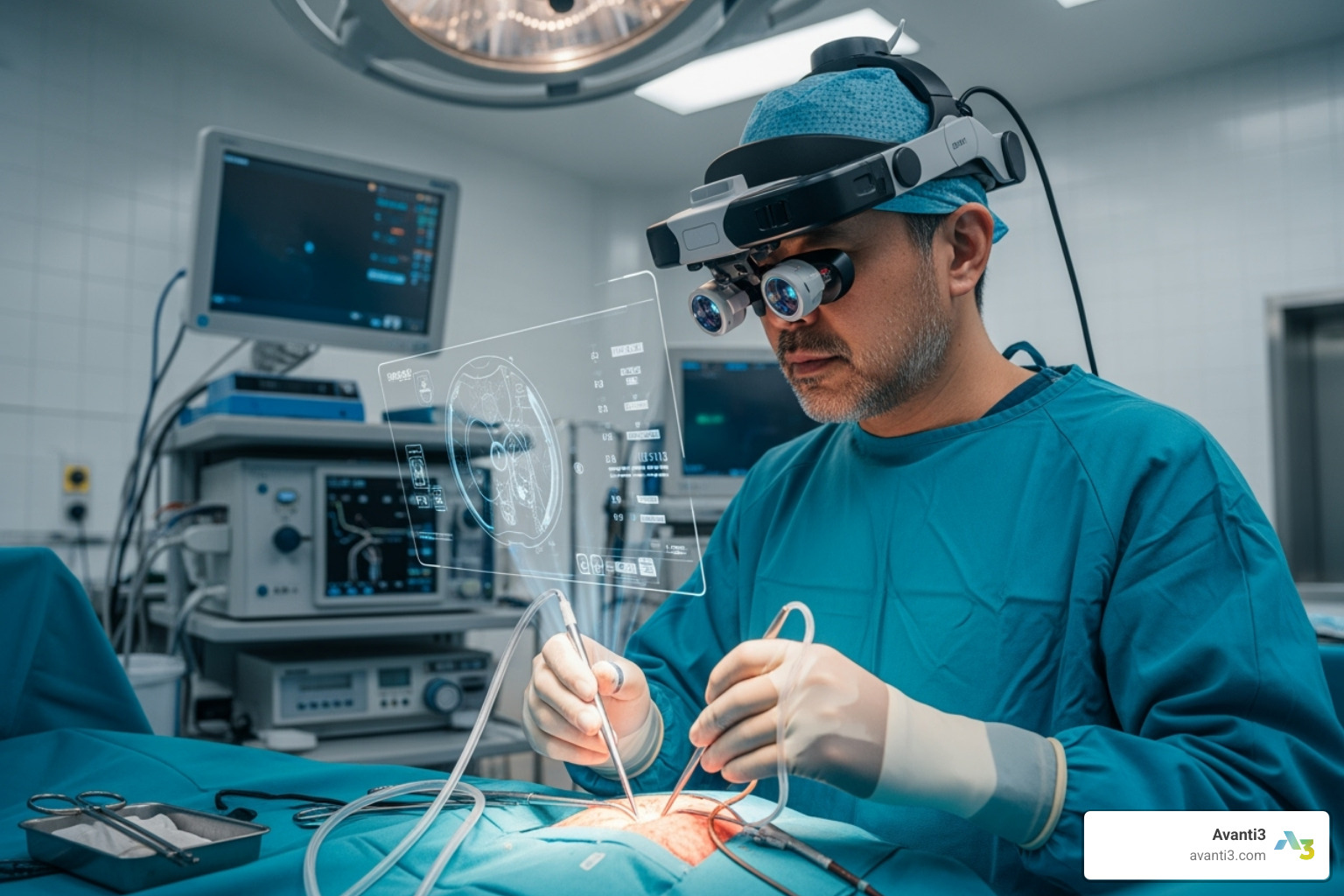
Augmented reality has moved far beyond face filters. Today it is a practical tool that boosts learning, streamlines workflows, and even saves lives.
Revolutionizing Learning and Training
- Interactive 3D models let students inspect engines, molecules, or body parts from every angle.
- Risk-free simulations put trainees through emergency drills or complex assembly steps without costly equipment.
- Remote guidance overlays expert instructions directly onto machinery in the field, cutting downtime.
- Because lessons are hands-on, knowledge sticks: a brief mixed-reality session can replace dozens of pages of written instructions.
Enhancing Healthcare and Patient Outcomes
- Surgeons use AR overlays for surgical navigation, viewing anatomy and vital data without taking their eyes off the patient.
- Medical students rehearse procedures on virtual bodies before assisting in a real operating theatre.
- Rehabilitation games transform repetitive physio exercises into motivating challenges, while AR visualisations help patients understand their condition and treatment plans.
- Emerging vision-assistance applications demonstrate how context-aware data can improve safety in specialised environments, from diving to industrial maintenance.
Across sectors, the common pattern is clear: when information appears exactly where and when it’s needed, people learn faster, work smarter, and make better decisions.
The Road Ahead: Challenges, Safety, and the Future of AR
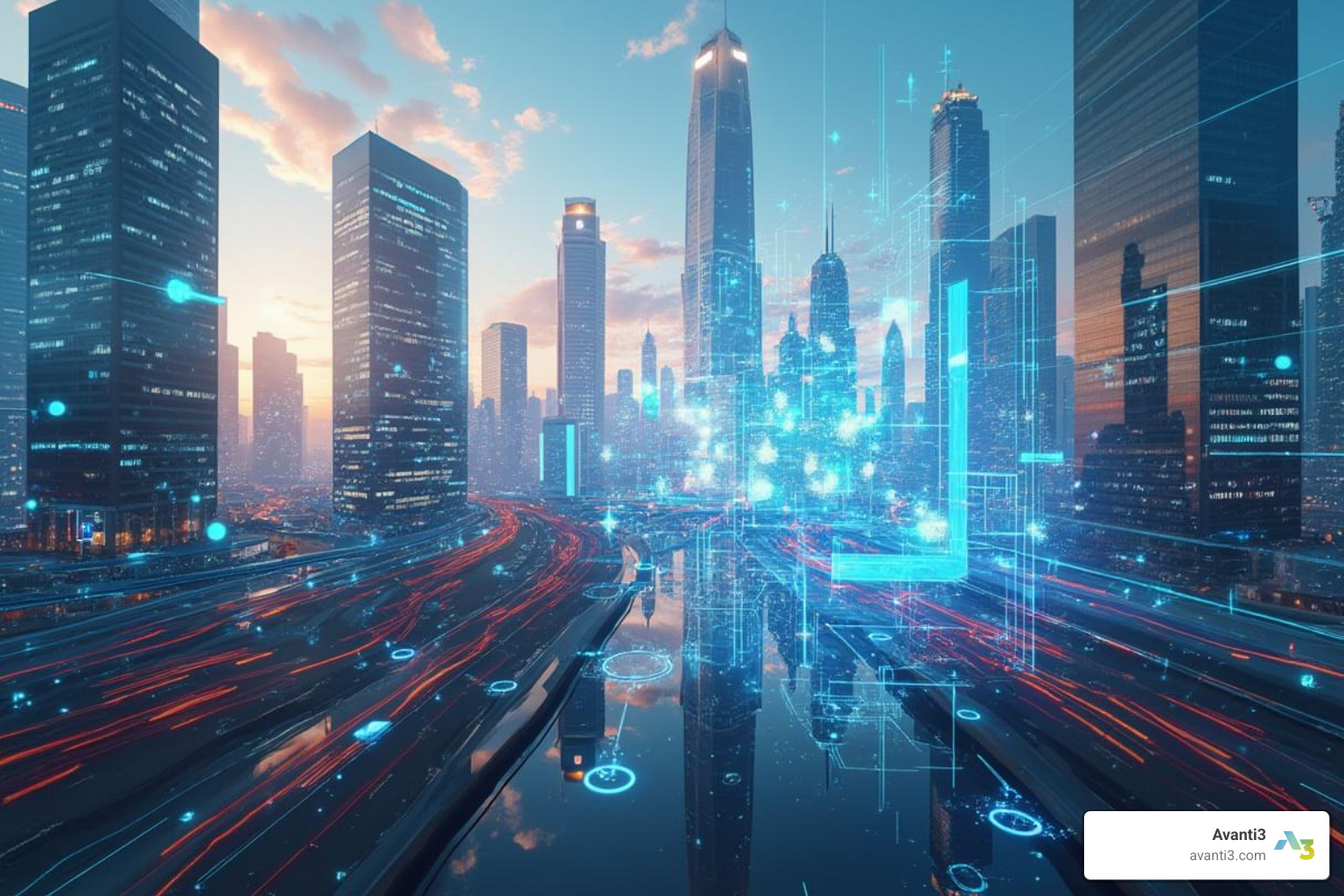
Overcoming the Problems in Immersive Augmented Reality
High-end AR still comes with problems: pricey hardware, narrow fields of view, a constant appetite for detailed 3D assets, and the need to safeguard the vast personal data that AR devices collect. Engineers are steadily shrinking components, while AI-assisted content pipelines and stronger privacy controls are making scalable, responsible AR more realistic every year.
Balancing Immersion with User Safety
Designers must ensure digital overlays never hide real-world hazards. Clear UX cues, low-latency tracking, and sensible usage guidelines (for example, audio-first navigation in cars) help users stay oriented and comfortable. Robust encryption and transparent data policies protect trust.
What is the future outlook for immersive technologies like AR, VR, and MR?
Within the next decade lightweight glasses are expected to merge the best of AR, VR, and MR, guided by AI that understands context and personal preference. As costs drop, industries from retail to engineering will standardise on XR for visualisation, training, and collaboration, making “immersive computing” as normal as the smartphone is today.
Frequently Asked Questions about AR Immersion
What is the difference between immersion and presence in AR?
- Immersion = the system’s technical ability to envelop your senses.
- Presence = your personal feeling of “being there.” Immersion is the cause; presence is the effect.
How does marker-based AR differ from markerless AR in terms of immersion?
Marker-based AR needs a printed target; if that marker drifts out of view the illusion breaks. Markerless AR relies on SLAM to pin digital assets to real-world surfaces, so objects stay in place as you move \u00199 far more convincing.
What role does AI play in creating more immersive AR experiences?
AI powers object recognition, real-time environment mapping, and lifelike virtual characters. It keeps graphics stable, drives believable interactions, and can even auto-generate textures or models, making high-quality AR faster to build and richer to experience.
Conclusion: Augmenting Our Reality for a Better Future
Wow, what a journey we’ve been on! We’ve explored the fascinating world of immersion augmented reality, diving deep into how digital magic blends with our physical world. It’s truly an amazing mix of art and science, where clever tech meets how we see and feel things.
We’ve seen how smart hardware, clever software, and thoughtful design can work together. They don’t just take us to new places. Instead, they make our current reality even better! From simple apps that add a digital layer to our daily lives to advanced tools for surgeons, AR is blurring the lines. It’s making our experiences richer in ways we never thought possible.
Looking ahead, the future of AR is incredibly exciting. We expect even deeper levels of immersion. This will happen thanks to better screens, smarter AI, and a deeper understanding of how our brains work. As we keep building these amazing technologies, one thing remains super important: keeping people at the center of our designs. We want these powerful tools to help us, teach us, and entertain us, all while keeping us safe and sound.
Here at Avanti3, we’re right at the cutting edge of this thrilling revolution. We blend powerful Web3 technologies like NFTs, blockchain, AR/VR, and AI. Our goal is to give creators and brands cool, custom tools for connecting with their audiences and managing their finances. We love creating unique digital experiences, fun reward systems, and ways for communities to grow together. We’re setting new standards for how people connect online and how creators can earn from their work. We truly believe that by beautifully blending the digital and physical worlds, we can build a brighter future for everyone.

